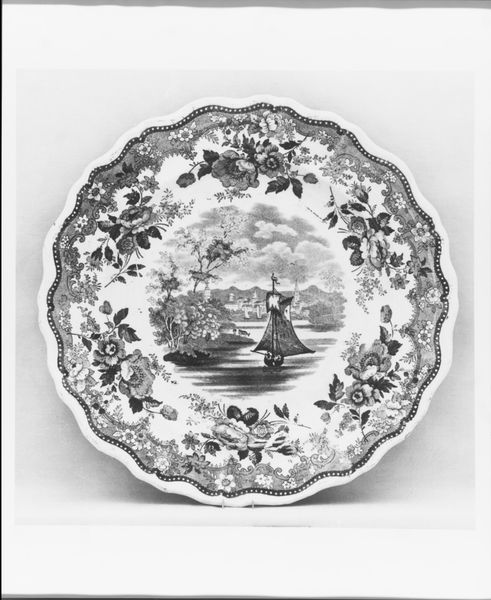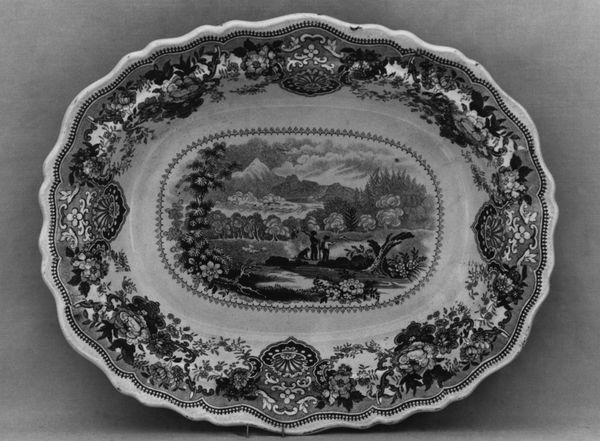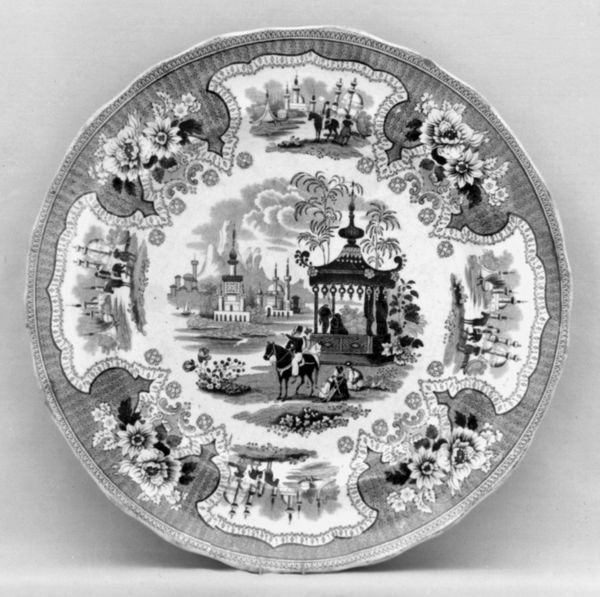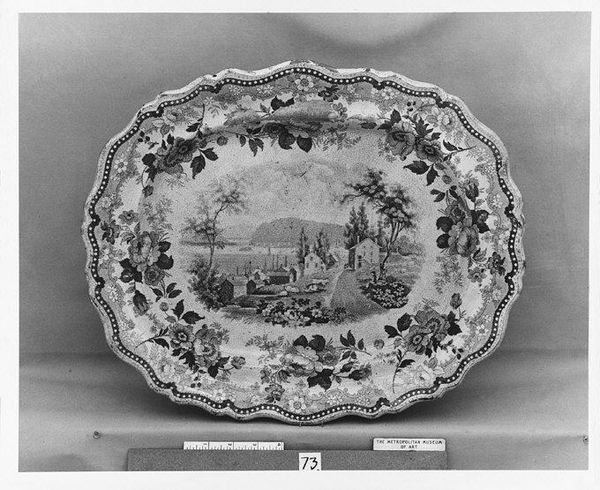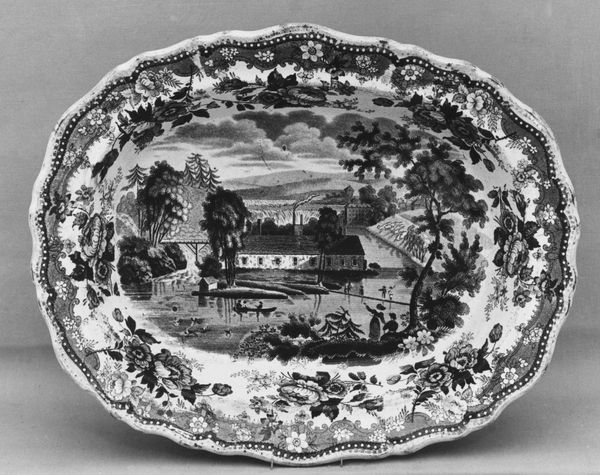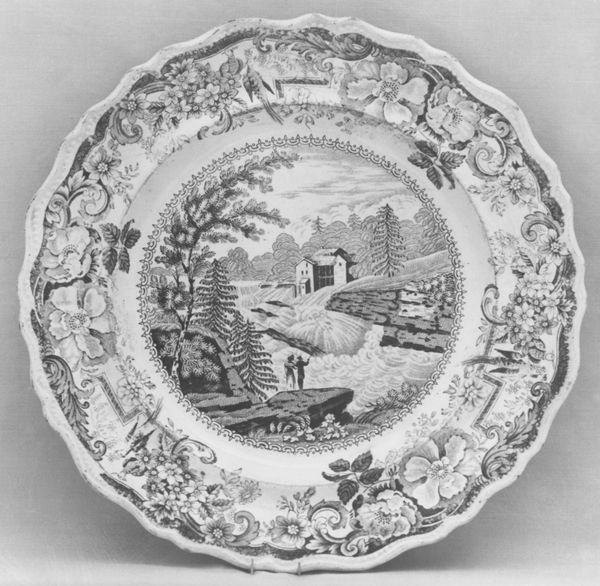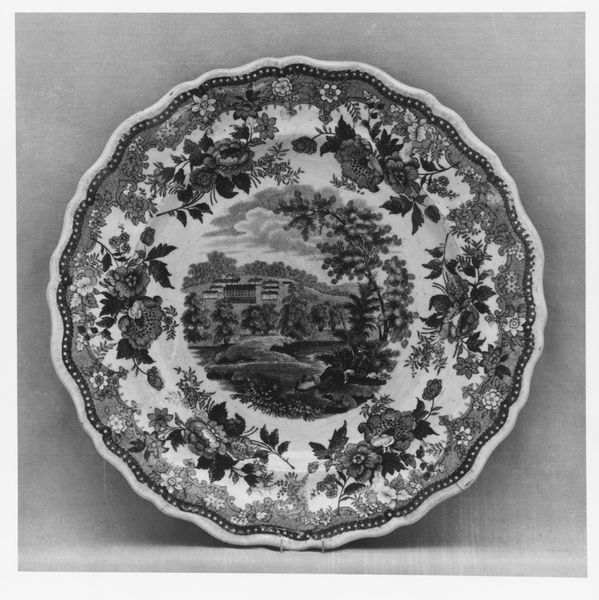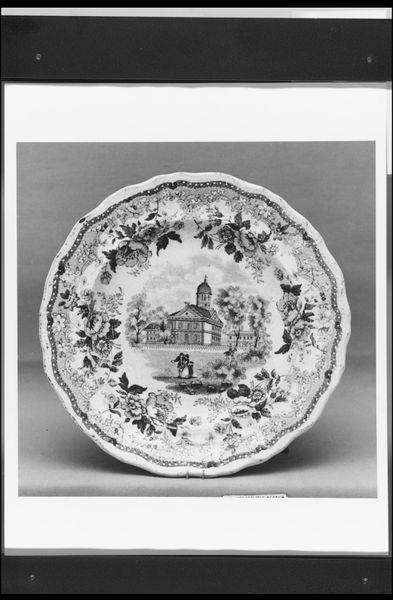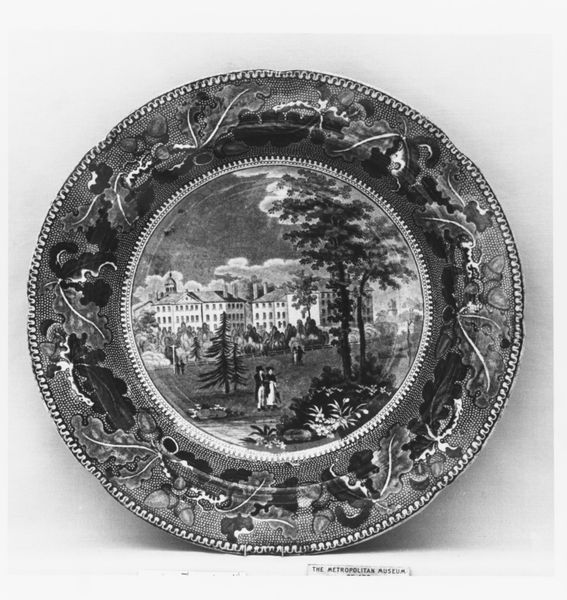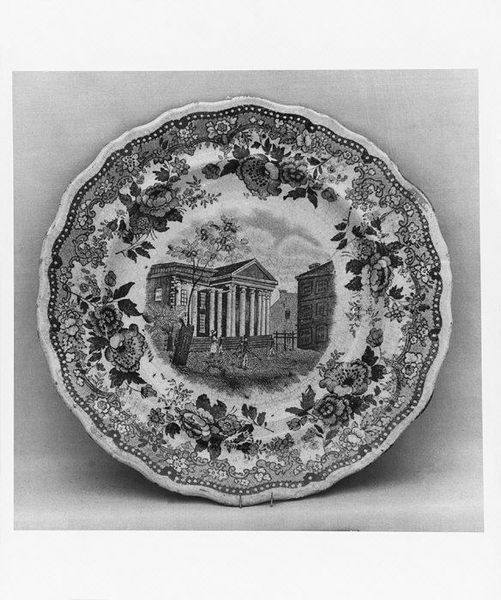
drawing, print, ceramic
#
drawing
# print
#
decorative
#
landscape
#
ceramic
#
flower
#
folk-art
#
romanticism
#
decorative-art
#
decorative art
#
building
Dimensions: Diam. 9 1/8 in. (23.2 cm)
Copyright: Public Domain
This plate was made sometime between 1831 and 1835 by Job and John Jackson, and is made of earthenware. It is an object deeply rooted in the history of industrial production. This unassuming plate shows the profound impact of mechanized manufacture on everyday life. It represents a shift from individualized craft to mass-produced goods affordable to a growing middle class. Earthenware like this was a staple of the 19th-century ceramics industry, which relied on division of labor. Each worker performing a small action in sequence, like preparing clay or applying transfers. The printed decoration is key. It provided a consistent, repeatable image, and therefore became a cornerstone of the business model. The floral details and the central image of architecture and leisurely figures, are all made by the same process. Consider the amount of skill that would have been required to make the mold for the form, and for the transfer print. And then consider the unskilled work, the labor of moving the plates through the assembly line. When we look at an object like this plate, we’re also seeing class relations, labor and consumption made visible. It pushes us to recognize the inherent value of the materials, the design, and the processes involved.
Comments
No comments
Be the first to comment and join the conversation on the ultimate creative platform.

